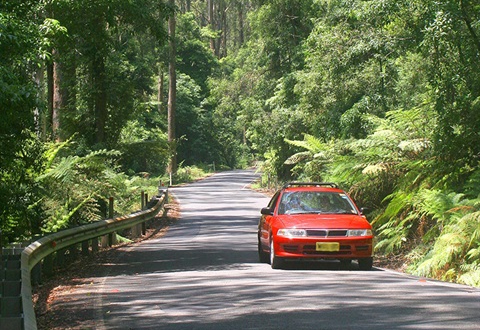Grow with John Gabriele: Shade-loving plants
John Gabriele
03 October 2025, 1:00 AM

Shade in the garden is a real asset - especially as we head into the hotter months.
In my own garden, I’ve found certain foliage plants thrive beautifully in both deep shade and dappled light.
Thanks to a well-established canopy cover, I’m able to grow a range of understory plants, like cycads and bird's nest ferns. These are ideal for shaded areas and bring real structure to the garden.
We often refer to these as architectural plants - bold in their foliage and form. Once established, they’re incredibly low-maintenance and happy to be left to their own devices.
Lower down in the garden, I’ve planted other species that work brilliantly in shade. One of my favourites is the lantern rose, or hellebore. It's a perfect ground cover for heavily shaded areas.
Nearby, I grow tenanthi, a plant often seen indoors - but remember, most indoor plants are simply outdoor plants we've invited inside to slowly decline.
That said, tenanthi does very well in shaded garden beds.
Even closer to the ground, I have the lovely Viola hederacea, also known as the native violet. This ground cover performs well in sun and shade.
In sunnier spots, the foliage may become a little etiolated - meaning it stretches, yellows slightly, and the leaves can be smaller - but it still holds its own.
Come spring, you’ll see a charming display of small white and violet flowers rising above the foliage.
So, gardening in shade? It’s not only possible - it’s rewarding. As your skills grow, you may find yourself seeking out more shady spaces just to expand your planting options.
And don’t think shade-loving plants are all about foliage! There are plenty of flowering options too.
Camellias, for example, are perfect for shaded gardens. They provide year-round greenery, act as excellent screening plants, and reward you with beautiful blooms through winter and spring.
As the camellia flowering season wraps up - usually around late September - it’s a great time to prune. A general rule: cut back by about a third of the season’s growth.
For instance, mine put on about 30cm this year, so I trimmed back around 10cm. When pruning, take a close look at the material you’re removing. I noticed some russeting along the midrib of one leaf - likely a sign of sunscorch. This plant gets a bit of western sun in the afternoon - not ideal - but it still grows quite well.
If you’ve got shade in your garden, camellias are a fantastic shrub choice. They offer structure, screening, and colour when you need it most.
NEWS



